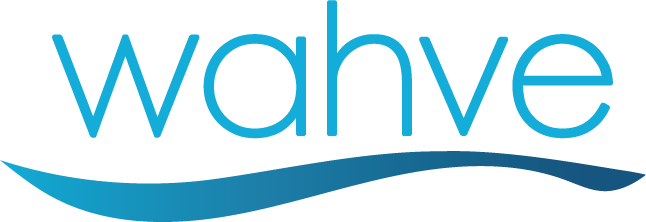As we enter 2025, the insurance industry faces a dynamic mix of opportunities and challenges that demand a fresh approach. Technological advancements, shifting societal expectations, and the ripple effects of global events have transformed the traditional concept of risk. Insurers must adopt innovative strategies and forward-thinking measures to safeguard their clients while staying competitive. This article explores the most pressing risks of today and provides an in-depth look at how insurers can lead the way in navigating these complexities.
1. The Growing Threat of Cyberattacks
Cybersecurity risks continue to evolve, posing significant challenges for insurers. With the rise of ransomware attacks, phishing schemes, and large-scale data breaches, businesses of all sizes are vulnerable. Insurers must:
- Expand Cyber Coverage: As cyber threats become more sophisticated, the demand for comprehensive cyber insurance is surging. Customizable policies addressing specific industry vulnerabilities are crucial.
- Invest in Cyber Risk Assessment: Leveraging advanced analytics and AI can help identify vulnerabilities, simulate potential attack scenarios, and mitigate cyber risks effectively.
- Collaborate with Tech Experts: Partnering with cybersecurity firms not only strengthens policyholder protection but also bolsters insurers’ credibility as leaders in risk management.
- Provide Proactive Risk Mitigation Services: Offering policyholders tools and training to improve their own cybersecurity can reduce claims frequency and severity.
2. Climate Change and Catastrophe Risks
The increasing frequency and severity of natural disasters—wildfires, floods, hurricanes, and more—are pushing insurers to rethink traditional risk assessment models. Key strategies include:
- Enhancing Risk Models: Real-time data from IoT devices, satellites, and predictive analytics can provide more precise risk evaluations. These tools also enable insurers to adapt quickly to evolving threats.
- Encouraging Resilience: Incentivizing policyholders to adopt sustainable building practices, such as climate-resilient materials and renewable energy systems, can mitigate potential damages.
- Government Collaboration: Insurers working with governments to establish public-private partnerships can drive community-wide resilience initiatives and disaster preparedness plans.
- Developing Parametric Insurance Products: These innovative policies offer pre-defined payouts based on specific triggers, such as rainfall levels or wind speeds, ensuring faster and more efficient claims processing.
3. Evolving Regulatory Landscape
Global regulatory changes are demanding greater transparency and accountability from insurers. This trend emphasizes the importance of compliance and adaptability. Focus areas include:
- ESG Reporting: Environmental, Social, and Governance (ESG) considerations are no longer optional. Insurers must integrate ESG criteria into their core operations, ensuring that their practices align with sustainable and ethical standards.
- Data Privacy and Security: Stricter data protection regulations demand robust systems to safeguard sensitive customer information. Failure to comply can result in hefty fines and reputational damage.
- Automation in Compliance: Regulatory technology (RegTech) solutions can streamline compliance processes, reduce errors, and ensure that insurers meet all legal obligations efficiently.
- Cross-Border Coordination: For multinational insurers, staying aligned with the diverse regulatory requirements of different regions is critical to maintaining seamless operations.
4. Artificial Intelligence and Automation Risks
AI and automation are transforming the insurance industry, driving efficiencies and innovation. However, they also introduce unique challenges, including biases in algorithms and ethical dilemmas. Insurers should:
- Implement Ethical AI Standards: Transparency, fairness, and accountability must guide the development and deployment of AI systems to avoid reputational risks.
- Educate and Empower Teams: Equip employees with the skills to understand, manage, and mitigate AI-related risks, ensuring human oversight remains integral.
- Monitor AI Tools Continuously: Regular evaluations and updates to AI systems are essential to ensure their relevance, accuracy, and alignment with evolving market needs.
- Leverage AI for Fraud Detection: Advanced AI systems can analyze vast amounts of data to detect fraudulent claims, reducing financial losses and protecting policyholders.
5. Supply Chain Disruptions
Global supply chain vulnerabilities have been highlighted by recent geopolitical and economic instabilities. Insurers can play a pivotal role in mitigating these risks by:
- Expanding Business Interruption Coverage: Modern policies should address not only physical damage but also disruptions caused by supply chain failures.
- Enhancing Risk Assessment Tools: By integrating data analytics, insurers can identify bottlenecks and vulnerabilities within global supply chains.
- Promoting Supply Chain Resilience: Encouraging businesses to diversify suppliers, invest in inventory management systems, and adopt advanced logistics solutions can reduce the likelihood and impact of disruptions.
- Supporting New Technologies: Emerging tools, such as blockchain for supply chain transparency, can provide additional layers of security and efficiency.
Preparing for the Future
The insurance industry’s ability to navigate emerging risks hinges on proactive measures and relentless innovation. Insurers must:
- Embrace Technology: Investing in advanced analytics, IoT devices, and AI-driven platforms is essential to staying ahead of risks and market demands.
- Foster Cross-Industry Collaboration: Partnering with technology firms, governments, and academic institutions can drive innovation and shared solutions for complex challenges.
- Prioritize Customer-Centric Solutions: Tailoring products to meet the evolving needs of policyholders ensures long-term loyalty and trust.
- Adopt a Forward-Looking Mindset: Scenario planning and agile risk management practices enable insurers to adapt to unforeseen challenges effectively.
Insurers that position themselves as thought leaders and innovators will not only mitigate risks but also seize opportunities to redefine their roles in a rapidly changing world. By staying vigilant and committed to progress, the insurance industry can protect its clients and thrive well into the future.

0 Comments